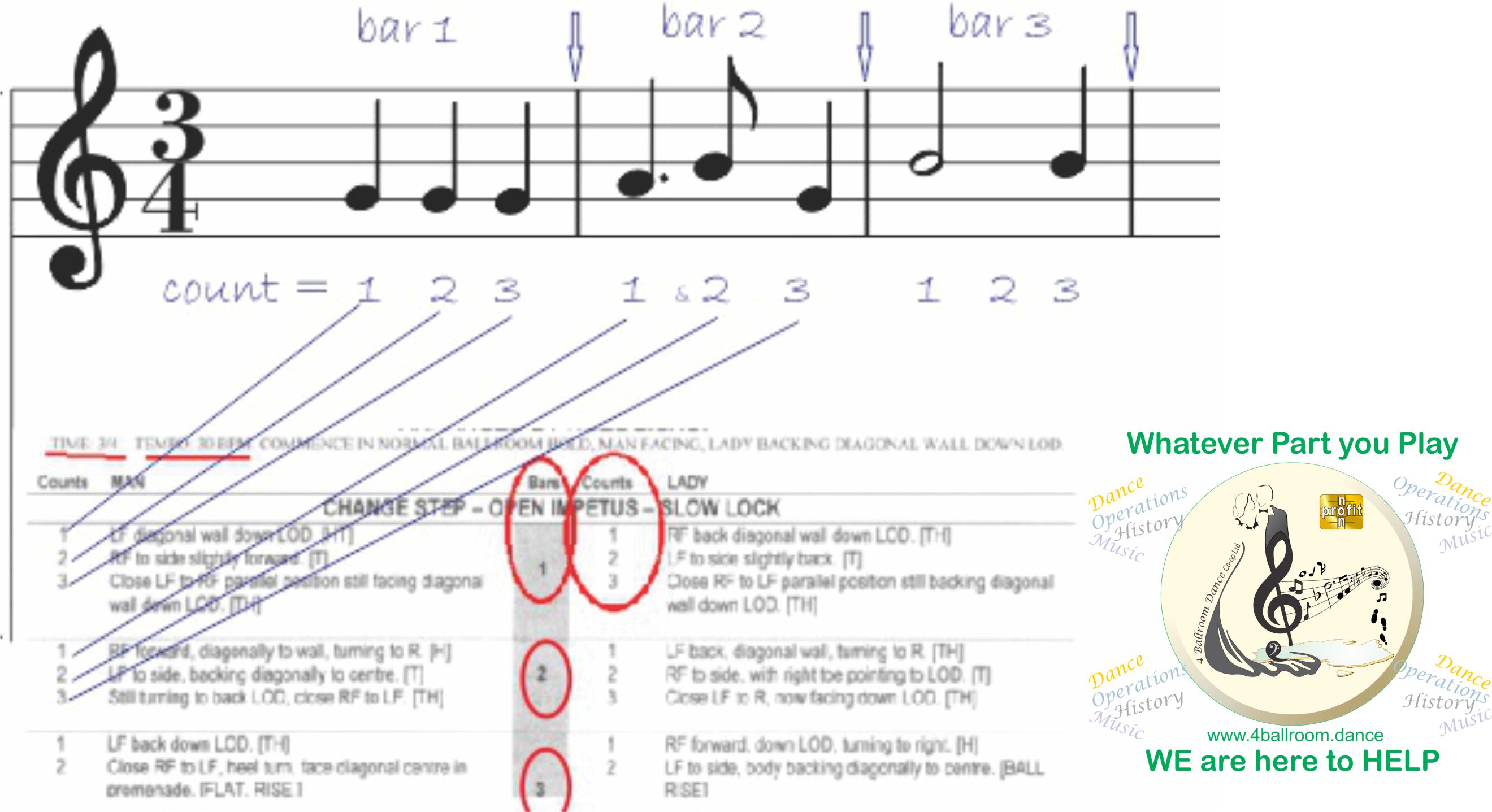Music Timing for Dance – the whys
BEATS bpm – BARS BPM – MEASURES MPM (more commonly used in US)
Throughout music evolution with early records dating to the 14th century, the basis remains consistent yet still confuses a great many people.
While this is not a lesson in the rudiments of music, we will stick to the simplified reality so you can make use of the information you have at hand:
TIMING – BEATS are the value & number of the notes played within a bar (or measure) so the top number signifies how many counts per bar. 
It is not a fraction. In this instance, it is 3-4 (three/four) time.
These are noted both musically and on a dance script the same way, in this instance 3.
The top number represents how many beats (counts) per bar.
The bottom represents the value of the beat which makes up the whole bar in this case 4 which is 4 quarter beats.
In music, a crotchet (Quarter note) is held for ONE count.
All bars in a piece of music have the same number of beats (unless they are complex orchestral pieces)
So even though the timing notation it is not a fraction, musicians play – 3 quarter notes per bar or a combination that equals 3 quarter notes per bar.
TIMING for a music piece is annotated with a time signature both musically and on a dance Script
TEMPO or speed of the music is noted in numerous ways
Musically via descriptions and occasionally via note tempo
Dance Script via the annotation eg: 30BPM which in most cases relates to Bars or Measures per minute and not Beats
BARS Musically a bar is denoted by bar-lines and in this case, each bar is made up of 3 quarter notes or combination that adds up to 3 quarter notes per bar.
Dance Script is denoted by Figures (usually a group of 4 bars) with per bar dance-step combinations to make up the 3 quarter beats per bar.

LENGTH Music piece length therefore, matters to “sequenced” dance as it ensures a dancer has a distinct start point. (4 bar intro) then the number of bars to allow a full dance sequence (see script) to be repeated a number of times and music and dancer end in unison.
Over time and differing expertise entering the subject (there are numerous theorists and DJs who attempt to explain Beats per Minute) Tempo and timing is as simple as it is complex. The internet is full of experts and some sheet music that makes no sense at all to any musician.
In this display, you will see that a musician can no more count a BAR (all the beats between bar lines) as one beat than a dancer can count one set of dance steps in a bar sequence (as notated on the scripts) as one.

A dance script noting 3-4 time with a tempo of 30 BPM to a musician is 90 beats per minute because they are playing 90 x 3 (quarter beats – one count) per minute.
